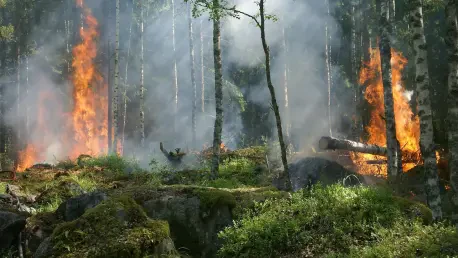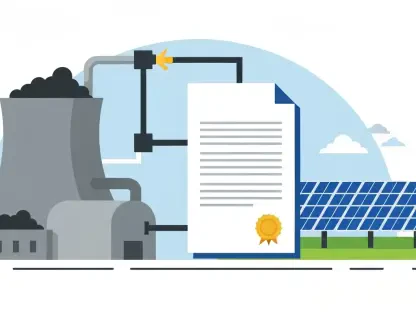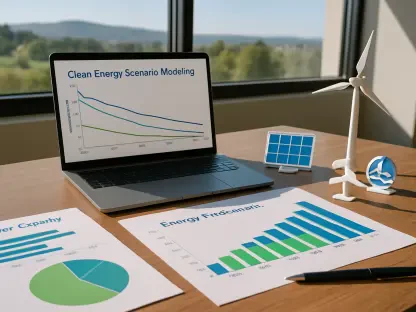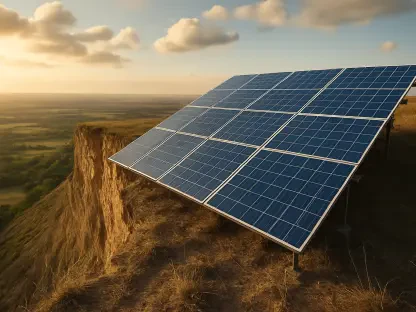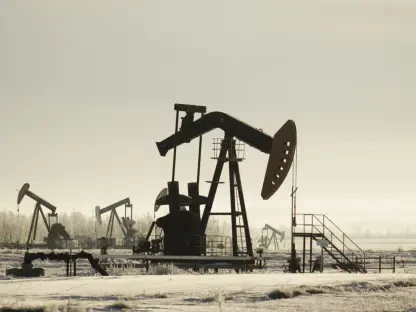I’m thrilled to sit down with Christopher Hailstone, a seasoned expert in energy management and renewable energy, who brings a wealth of knowledge on electricity delivery and grid reliability. As our go-to utilities specialist, Christopher offers critical insights into the complex challenges utilities face, particularly in the wake of natural disasters like wildfires. Today, we’re diving into the pressing issue of how utilities manage the financial fallout from such events, focusing on a recent case involving significant wildfire-related costs and their impact on transmission rates. Our conversation explores the intricacies of regulatory oversight, the balance between cost recovery and customer affordability, and the broader implications of climate-driven challenges for the energy sector.
Can you walk us through why a utility might seek to include billions in wildfire-related costs in its transmission rates, and what specific events or factors typically drive these expenses?
Absolutely, Carlos. Utilities often face enormous financial burdens from wildfires, especially in regions prone to extreme weather. These costs can stem from damages caused by fires—sometimes linked to utility infrastructure like power lines—as well as settlements, legal liabilities, and future risk mitigation. For instance, fires in 2020 and 2022 in the western U.S. have led to significant losses due to property damage and legal claims. The driving factors often include the scale of the fires, which can be exacerbated by climate change, drought, and high winds, creating a perfect storm for utilities to manage both immediate recovery and long-term prevention strategies.
How do major wildfire events impact a utility’s financial stability, and what makes these incidents particularly challenging in the context of a changing climate?
Wildfires can be financially devastating for utilities, often running into hundreds of millions or even billions in damages and liabilities. Beyond direct costs, there are indirect hits like lost revenue from service disruptions and the expense of rebuilding infrastructure. What makes this especially tough in a changing climate is the increasing frequency and intensity of these events. Utilities are dealing with a new normal where extreme weather isn’t a rare occurrence but a recurring threat, pushing them to invest heavily in grid hardening and fire prevention while grappling with how to fund it all without breaking the bank for customers.
When a utility proposes substantial rate increases to cover wildfire costs, how do they typically justify this to customers and regulators, and what are the potential impacts on the communities they serve?
Utilities usually argue that rate increases are necessary to recover costs from catastrophic events and to fund improvements that prevent future disasters. They’ll point to the sheer scale of the expenses—like legal settlements or infrastructure upgrades—and emphasize that spreading these costs through rates ensures financial stability to keep the lights on. For communities, though, this can mean higher bills, which is a tough pill to swallow, especially in states with large customer bases. The impact varies; some households might see significant jumps in costs, while others might be cushioned by state programs or rate designs. The challenge lies in balancing recovery with affordability, often under intense public and regulatory scrutiny.
What are some of the key objections raised by stakeholders when a utility tries to pass wildfire-related costs onto customers through transmission rates?
Stakeholders, like other power entities or consumer groups, often push back on several fronts. A major concern is whether the utility acted prudently—did they do everything reasonably possible to prevent the fires or mitigate risks? If there’s evidence of negligence, as determined by courts or juries, critics argue those costs shouldn’t be borne by customers. There’s also debate over including future liabilities in rates, as some believe it’s unfair to charge for risks that haven’t materialized. These objections highlight a broader tension about who ultimately pays for disasters in an era of increasing environmental hazards.
Can you explain the concept of ‘prudence’ in utility cost recovery, and why it’s such a critical sticking point in these kinds of regulatory disputes?
Prudence, in this context, refers to whether a utility’s actions and decisions were reasonable and responsible given the circumstances. It’s a cornerstone of regulatory oversight because it determines if costs can be passed to customers. If a utility is deemed imprudent—say, by failing to maintain equipment that sparked a fire—regulators or challengers might argue those expenses should come out of shareholder profits, not ratepayer pockets. It’s a sticking point because it’s often subjective, requiring detailed examination of utility practices, and it sets a precedent for how much risk customers are expected to shoulder.
How do legal findings, like a jury verdict of negligence in a specific wildfire case, influence the regulatory process for approving rate adjustments?
Legal findings, such as a jury ruling a utility negligent in a wildfire incident, can complicate the regulatory process significantly. While these verdicts aren’t binding on federal regulators like FERC, they can cast doubt on a utility’s prudence and sway public and regulatory opinion. Utilities might argue that a single case doesn’t reflect their overall management, especially if most costs aren’t tied to that incident. However, challengers use these rulings as evidence to question whether ratepayers should foot the bill. Regulators then have to weigh these findings against broader evidence, maintaining their authority to make independent judgments.
What is your forecast for how the energy sector will adapt to the growing financial and operational challenges posed by wildfires and other climate-driven disasters in the coming years?
I think we’re going to see a multi-pronged evolution in the energy sector. Utilities will likely ramp up investments in grid resilience—think underground lines, better vegetation management, and advanced monitoring tech to detect faults before they ignite fires. There’ll also be a push for innovative financing, like catastrophe bonds or federal aid programs, to spread the risk beyond just ratepayers. Regulatory frameworks will need to evolve too, possibly with clearer guidelines on cost recovery for climate-related damages. But the big challenge will be balancing these adaptations with affordability, as costs keep climbing. I expect collaboration between utilities, regulators, and communities will be key to finding sustainable solutions.
